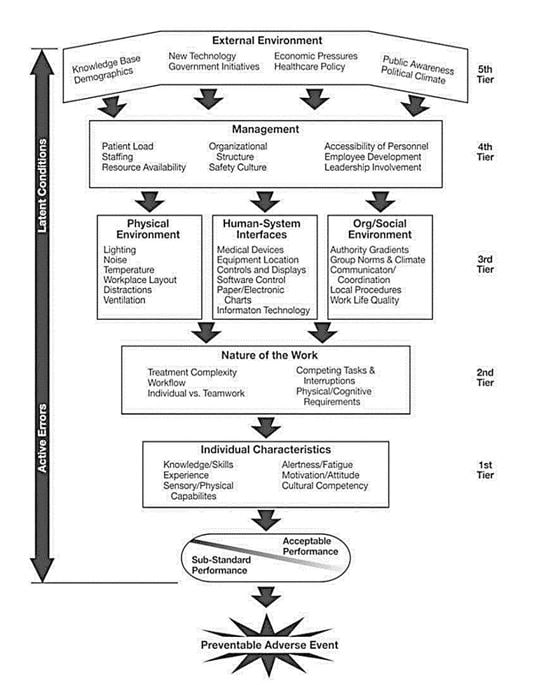The Sociotechnical Model
The Sociotechnical Model represents technical, environmental, and social factors of preventable adverse events for workers including five tiers that interact from latent conditions to active errors (Henriksen et al., 2008). The five tiers are:
- External environment (healthcare policy, funding, political climate, community served)
- Management (staffing, resources, training, leadership engagement)
- Organizational, physical, and human systems interface environment (space/lighting type and use of technological equipment such as electronic charting, devices, group norms, and authority hierarchy)
- Nature of work (extent to which well-defined procedures are utilized)
- Individual characteristics (skills, training, alertness/fatigue, experience)

With a systems perspective, the focus is on the interactions or interdependencies among the tiers or components. Hence, it is important to focus on the way these components can interact and influence one another and not just the components themselves. When these components are functioning well together, they serve collectively as a set of barriers or system of defenses to the occurrence of preventable adverse events. If there is a breakdown in system components, weaknesses can occur creating opportunities for adverse events.
For safety culture to be effective in the organization, it is essential to recognize that preventable adverse events are indicators that there are interaction problems between the components that need to be addressed and corrected rather than focusing solely on one component part.
